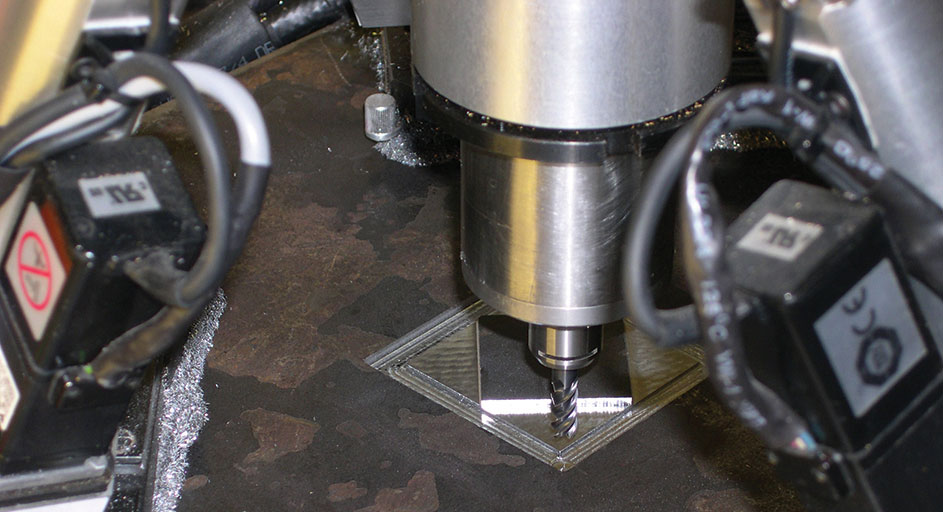
Innovative ‘robot’ earns trio an award of excellence
May 31st, 2012
Engineers at The University of Nottingham and a colleague at Rolls-Royce have been awarded an award of excellence for a revolutionary ‘robot’.
Professor Dragos Axinte and Dr John Allen at the Rolls-Royce University Technology Centre (UTC) in Manufacturing Technology and Ralph Anderson at Rolls-Royce have been awarded a Rolls-Royce Submarines Excellence Through Innovation Award for their unique miniature machine tool, a Free-leg Hexapod, or FreeHex.
Their portable version of a flexible machining system promises to cut costs and improve efficiency. The miniature six-axis parallel kinematic platform can apply complex computerised milling processes to a range of in-situ maintenance jobs. It demonstrates how Nottingham UTC researchers in collaboration with European partners, such as Tekniker in Spain, tackle ‘real-world’ engineering challenges, delivering solutions through the University’s Rolls-Royce UTCs.
The idea for the FreeHex came after Rolls-Royce’s submarine business, which required in-situ repairs in confined spaces, asked for a smaller and more flexible version of its machinery, but with the same functionality.
“Many traditional machine tools are still ‘serial manipulators’ like robot arms; a chain of rigid links in a series. These serial kinematic machines (SKMs) stack independent stages to provide multi-axis movement; but this can lead to compound errors,” says UTC Director Prof Axinte. “Alternative parallel kinematic mechanisms driven by actuators, often telescopic ‘jacks’ and ball-screw drives linked in pairs, are flexible but also more complex.
“Our development of a Free-leg Hexapod, a unique parallel kinematic configuration without base platform so that the lower joints (feet) can be attached to the surfaces of various geometries, takes this kind of robotised in-situ processing machine a reality. This initial development will be continued as a FP7 EU-funded project, MiRoR, for which our key partner, Tekniker, will support the manufacture of the Walking FreeHex.”
The design has now been patented and Rolls-Royce is looking at using it in other areas, such as aerospace.
“Previous attempts to produce machines for in-situ maintenance resulted in bespoke machines designed for just one purpose,” says Prof Axinte. “Our machine has enough flexibility to tackle many tasks. The technology has great potential, and we’ve had strong interest from many businesses, including Formula One teams.”
Mr Anderson added: “The technology offers us a genuine alternative to our traditional bespoke machine designs.”
The machine weighs less than 5kg. Rather than wait for a workshop to make and deliver a part, the device brings workshop functionality on site and approaches repair tasks intelligently. Its computer numerical control ensures highly accurate and repeatable machining which can operate remotely in dangerous environments.
Combined with remote monitoring of equipment and analysis of data for predictive maintenance, this adds a new element to industry efforts to boost efficiency, reduce plant downtime and minimise costs.
Tags: Dr John Allen, Free-leg Hexapod, FreeHex, Professor Dragos Axinte, Rolls-Royce Submarines Excellence Through Innovation Award, Rolls-Royce University Technology Centre (UTC) in Manufacturing Technology, Tekniker
Comments are closed.
Other

Need news? See you on SharePoint
After 14 years of service, Campus News is being retired as the university’s staff news platform. […]

Roads and car parks closed for refurbishing work
As part of ongoing road improvements at the university, works will be taking place to resurface […]

